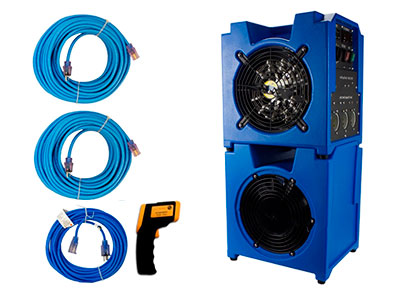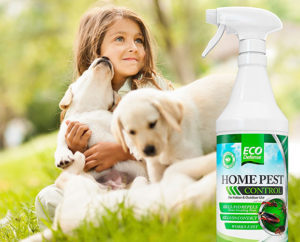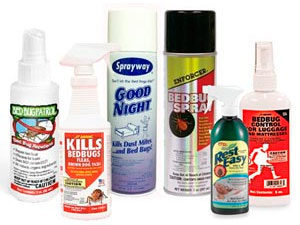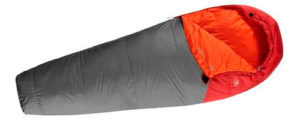Bed bug heaters are essential tools for anyone dealing with a bed bug infestation who needs to decontaminate clothes, bedding, personal belongings, and even entire rooms. These devices use controlled heat to kill bed bugs at all life stages, offering a chemical-free alternative to traditional pest control methods. With various options available on the market, choosing the best bed bug heater requires careful consideration of size, heating capacity, and specific needs.
Quick Picks: Best Bed Bug Heaters
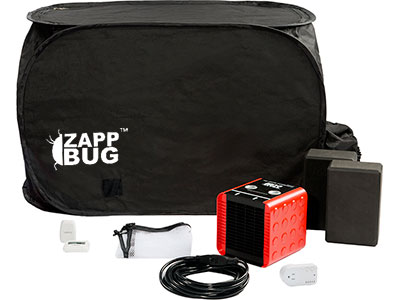
Editor’s Choice
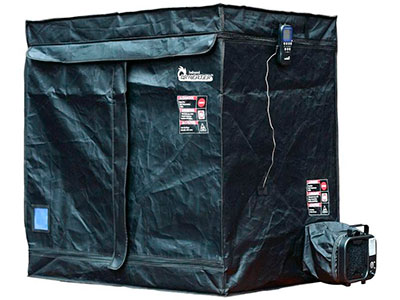
People’s Choice
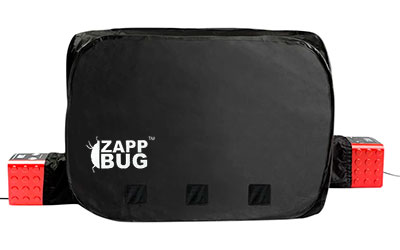
Best for Large Items
How to Choose the Right Bed Bug Heater
Selecting the ideal bed bug heater requires careful consideration of several key factors. The right choice will depend on your specific situation, the scale of your bed bug problem, and your budget. This guide will help you navigate the options and find the best solution for your needs.
Understanding Your Treatment Needs
Infestation Severity
For preventative measures or treating small items from travel, a compact unit like the ZappBug Heater may suffice. For active home infestations, consider larger units that can handle furniture or entire rooms.
Items to Treat
Make a list of everything you’ll need to treat—clothing, bedding, luggage, furniture, etc. The dimensions and volume of these items will determine the minimum size heater you’ll need.
Treatment Frequency
If you travel frequently or live in a high-risk area, investing in a higher-quality unit with built-in safety features and faster heating times may be worthwhile for regular use.
Available Space
Consider where you’ll use and store the unit. Measure doorways, rooms, and storage areas to ensure your chosen heater will fit both during operation and when stored.
Critical Features to Consider
| Feature | Why It Matters | What to Look For |
|---|---|---|
| Chamber Size | Determines what items you can treat at once | Measured in cubic feet; 12-22 cubic feet for personal items, 80+ cubic feet for furniture |
| Heating Element Power | Affects heat-up time and maximum temperature | 1,200-1,500W elements are standard; multiple elements for larger units |
| Temperature Control | Ensures effective treatment without damage | Built-in thermostats, temperature sensors, auto shut-off features |
| Portability | Impacts ease of use and storage | Folding designs, included storage bags, lightweight materials |
| Construction Quality | Determines durability and heat retention | Reinforced seams, heavy-duty zippers, quality insulation |
| Electrical Requirements | Must match your home’s capabilities | Number of outlets needed, circuit capacity, extension cord compatibility |
Heater Types and Their Best Uses
Budget Considerations
Cost vs. Value Analysis
When evaluating bed bug heaters, consider these financial factors:
- Initial Investment: Portable units range from $200-$500, while room systems can exceed $1,000
- Professional Treatment Costs: A single professional heat treatment typically costs $1,000-$3,000 per room
- Replacement Costs: The value of items you might otherwise need to discard
- Long-term Usage: Consider frequency of use and expected lifespan of the unit
- Power Consumption: Operating costs based on your electricity rates
For occasional use or preventative measures, a mid-range portable unit offers the best value. For severe or recurring infestations, investing in a higher-end model can save money compared to professional treatments.
Safety Features to Prioritize
Essential Safety Elements
- Auto Shut-off: Prevents overheating if the unit exceeds safe temperatures
- Tip-over Protection: Automatically turns off heating elements if the unit falls over
- Timer Functions: Allows for preset treatment times without constant monitoring
- Temperature Sensors: Multiple sensors ensure consistent heating throughout the chamber
- Quality Insulation: Prevents heat from escaping and maintains exterior cool enough to touch
- UL Certification: Indicates the unit has met safety standards for electrical appliances
Remember that even the most expensive bed bug heater will be ineffective if used incorrectly. Follow manufacturer guidelines for loading, temperature settings, and treatment duration. For severe infestations, consider combining heat treatment with other methods or consulting a professional exterminator.
Top 5 Bed Bug Heaters in 2025
| Product | Capacity | Heat Output | Best For |
|---|---|---|---|
| ZappBug Heater | 12 cubic feet (23 x 37.5 x 23 inches) | 1,400-Watt heater, 120-155°F | Clothing, small luggage, household items |
| Dr Infrared Heater | 18 cubic feet (38 x 38 x 26 inches) | Infrared heating, 120-155°F | Larger batches of clothes, medium luggage |
| ZappBug Oven 2 | 22 cubic feet (39 x 39 x 27 inches) | Two 1,500-Watt heaters, 120-155°F | Large luggage up to 39 inches wide |
| ZappBug The Room | Furniture-sized (80 x 111 x 57.5 inches) | Four heaters, 120-155°F | Furniture, mattresses, multiple items at once |
| Convectex Block Heat Package | Rooms up to 200 sq ft | 14,000 BTU, 34 Amps total | Entire rooms, professional treatment |
Detailed Reviews of the Top 5 Bed Bug Heaters
ZappBug Heater
Editor's ChoiceHow Does It Work
How to Use
- Place items on the included plastic bricks inside the unit, leaving two inches of space along the top and sides
- Close the unit and press the button to begin the heating cycle
- Use the included wireless thermometer to monitor temperature
- Wait until the unit reaches 120°F or higher and maintain this temperature for at least one hour
- For best results, remain in the house while the heater is in operation
- Sizable yet highly portable and easy to store
- Includes timer and wireless digital thermometer
- Side vents ensure even internal temperature
- Very quiet operation - comparable to a fan
- Effective against all bed bug life stages
- Limited capacity compared to larger models
- Does not include a built-in thermostat
- Can take 3+ hours to reach target temperature with heavy loads
- Using the spacer 'bricks' reduces usable space
Recommended Items for Treatment
The ZappBug Heater is perfect for treating a wide range of items including:
- Clothes, shoes, and coats
- Bedding and linens
- Books and paper items
- Children’s toys
- Small electronics (without batteries)
- Small luggage (particularly after hotel stays)
Not recommended for: Cell phones, items with batteries installed, or food items.
Dr Infrared Heater
People's ChoiceHow Does It Work
How to Use
- Set up the unit and connect to a standard outlet (uses 12.5 amps)
- Arrange items on the two-tier rack system
- Set the thermostat to the desired temperature (typically 120°F minimum)
- Monitor using the included thermometer and timer
- Once target temperature is reached, maintain for 40-60 minutes for complete eradication
- Quick heat-up time (15-20 minutes in many cases)
- Large 18 cubic foot capacity
- Built-in thermostat regulates temperature
- Even heat distribution via quiet turbofan
- Energy-efficient and well-insulated design
- Convenient two-tier rack system for organization
- Larger size requires more storage space
- Higher price point compared to basic models
- May collapse when stored, but still takes up significant space
Ideal Users
The Dr Infrared Heater is particularly beneficial for:
- Frequent travelers who need to decontaminate large suitcases
- Users who need to process large batches of items quickly
- Those who appreciate the convenience of built-in temperature controls
- Situations where minimizing treatment time is essential
ZappBug Oven 2
Best for Large ItemsHow Does It Work
How to Use
- Set up the unit in a location where you can access two separate electrical circuits
- Plug each of the two 1,500-Watt heaters into separate outlets
- Place items inside the chamber and close securely
- Monitor temperature with the included wireless thermometer
- Use the timer-based auto-shutoff feature to prevent overheating
- Ideal for treating large luggage pieces up to 39 inches wide
- Controlled cycle with auto-shutoff safety feature
- Digital wireless thermometer included
- Comes with a helpful 25-foot extension cord
- Double the heating power of the standard model
- Requires two separate outlets, preferably on different circuits
- No built-in thermostat to regulate temperature
- Higher price point than single-heater models
Power Requirements
It’s important to note that ZappBug Oven 2 requires:
- Two dedicated circuits (one outlet for each heater)
- Standard North American 120V outlets
- Each heater pulls 1,500 Watts
While adapting for use with 220V outlets overseas may be technically possible, it is not recommended for safety reasons.
ZappBug The Room
Best for FurnitureHow Does It Work
How to Use
- Assemble the chamber in an open area (takes about 10 minutes for one person)
- Connect the four heaters to separate 120V outlets
- Position the three temperature sensors in different areas of the chamber
- Place furniture or multiple items inside the treatment area
- Monitor temperatures periodically using the included thermometer
- Allow the auto-shutoff timer to control the heating cycle
- Massive capacity for furniture treatment
- Can penetrate even leather materials
- Easy 10-minute assembly by a single person
- Folds down surprisingly compactly for storage
- Includes extension cords and tip-over safety features
- Four heaters provide consistent temperature throughout
- Very durable and tear-resistant materials
- Requires significant space to set up
- Needs four separate 120V outlets
- Three temperature sensors must be carefully positioned
- Higher price point compared to smaller units
- No built-in thermostat (though it does have timers)
Convectex Block Heat Package
Professional ChoiceHow Does It Work
How to Use
- Prepare the room by closing windows and doors, blocking door cracks, and reducing clutter
- Connect the three heating elements to separate 120V circuits
- Position the breeze block axial fan for optimal airflow
- Set the thermostat to the target temperature
- Monitor the treatment using the included thermometer
- Run the system for the recommended time based on room size
- Can heat an entire room up to 200 square feet
- Complete treatment in just hours
- More cost-effective than multiple professional treatments
- Built-in thermostat for safety and convenience
- High-CFU internal fan maintains even temperature
- Includes lighted power cords for nighttime use
- Premium price point (over $1,000)
- Limited to rooms of 200 square feet or less
- Requires three separate 120V outlets (34 Amps total)
- Room preparation required before treatment
Bed Bug Heater Buyer’s Guide
Bed bug heaters have become the preferred method for eliminating these persistent pests for good reason. As bed bugs have developed resistance to many chemical treatments and learned to hide in inaccessible areas, controlled heat treatment has emerged as one of the most reliable solutions. This guide will help you understand how these devices work and what factors to consider when choosing one.
Why Heat Treatment is Effective
Overcomes Resistance
Many bed bugs have developed resistance to DDT and other chemical pesticides, and they’re often smart enough to avoid treated areas. Heat provides a solution they cannot evade or resist.
Reaches Hidden Bugs
Bed bugs hide in tiny cracks, crevices, and seams that chemicals often can’t penetrate effectively. Heat permeates these spaces, leaving no safe harbor.
Non-Toxic Solution
Heat treatment eliminates the need for potentially harmful chemicals on mattresses, furniture, and personal belongings, making it safer for households with children and pets.
Preserves Belongings
Modern DIY bed bug heaters allow you to treat and save items rather than throwing them away, reducing the financial impact of an infestation.
Temperature Requirements for Effective Treatment
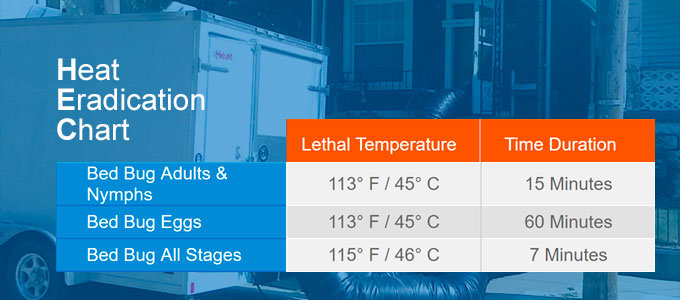
The science behind bed bug heat treatment is clear: temperature matters significantly for effectiveness:
| Temperature | Time to Kill Bed Bugs | Notes |
|---|---|---|
| 106°F (41°C) | ~90 minutes | Too slow for practical treatment |
| 120°F (49°C) | ~1 minute | Minimum effective temperature |
| 120-155°F (49-68°C) | Immediate to 1 minute | Standard range for most bed bug heaters |
Modern bed bug heaters maintain temperatures of 120-155°F for extended periods to ensure complete eradication of both adult bugs and eggs. While a clothes dryer on high heat might work for some items, dedicated bed bug heaters offer superior results because they:
- Can treat a wider variety of items beyond clothing
- Don’t tumble contents, protecting delicate items
- Maintain precise temperatures for the necessary duration
- Provide more consistent heating throughout the treatment chamber
Complete Bed Bug Heat Treatment Protocol
Successfully eliminating bed bugs requires more than just purchasing the right equipment—it demands proper preparation, execution, and follow-up. This comprehensive protocol will guide you through the entire process to ensure maximum effectiveness. To start, it’s essential to conduct a thorough inspection of your living environment, identifying all potential hiding spots where these pests may reside. After addressing any infestations, consider investing in the best bed bug powders for 2025, as they can offer potent solutions to secure your home against future outbreaks. Lastly, consistent monitoring and regular maintenance will help reassure you that your efforts are paying off and that bed bugs will remain a thing of the past.
Before Treatment
During Treatment
Loading the Heater
Arrange items with space between them to allow heat circulation. Place heavier items at the bottom and spread clothing or fabric items loosely. Follow manufacturer guidelines for maximum load size.
Temperature Monitoring
Position thermometers according to manufacturer instructions. The coldest spots in the unit should reach at least 120°F and maintain that temperature for the recommended duration.
Treatment Duration
Once the entire chamber reaches 120°F, maintain this temperature for at least 60-90 minutes to ensure all bugs and eggs are eliminated. Larger or densely packed items may require longer treatment times.
Safety Supervision
Remain at home throughout the treatment process. Periodically check the unit for proper operation but avoid opening the chamber during treatment as this will release heat.
Treatment Schedule for Severe Infestations
- Day 1: Treat bedding, sleepwear, and frequently used clothing
- Day 2: Treat furniture cushions, pillows, and additional clothing
- Day 3: Treat remaining fabrics, books, and personal items
- Day 7: Repeat treatment for bedding and sleepwear as a precaution
- Day 14: Final treatment of any remaining questionable items
This staggered approach ensures thorough elimination while maintaining necessary items for daily use.
After Treatment
| Item Category | Recommended Treatment Time | Special Considerations |
|---|---|---|
| Thin clothing, bedding | 60 minutes after reaching 120°F | Spread out evenly, don’t overpack |
| Thick clothing, small cushions | 90 minutes after reaching 120°F | Turn halfway through for even heating |
| Books, paperwork, small electronics | 120 minutes after reaching 120°F | Remove batteries, spread pages open |
| Luggage, backpacks | 90 minutes after reaching 120°F | Open all compartments, empty pockets |
| Shoes, boots | 90 minutes after reaching 120°F | Remove insoles if possible |
In cases of severe infestation, consider combining heat treatment with other methods like diatomaceous earth in cracks and crevices or consulting with a professional exterminator. Heat treatment is highly effective but works best as part of an integrated pest management approach.
Conclusion
Selecting the right bed bug heater depends on your specific needs, budget, and the scale of your bed bug problem. For most homeowners dealing with occasional concerns or wanting to decontaminate personal items, the ZappBug Heater offers the best balance of effectiveness, portability, and value. Those requiring larger capacity or faster treatment times might prefer the Dr Infrared Heater or ZappBug Oven 2. For furniture treatment, ZappBug The Room is unmatched, while professionals or those with severe infestations should consider the Convectex Block Heat Package.
Whichever model you choose, heat treatment provides a chemical-free, highly effective method to eliminate bed bugs at all life stages, helping you reclaim your home and peace of mind from these persistent pests.
Frequently Asked Questions
How long does the bed bug heat treatment process take?
The total treatment time depends on how long it takes the heater to reach 120°F, which varies based on the unit size, power, and load. Once at temperature, bed bugs die within one minute, but experts recommend maintaining heat for 30-60 minutes to ensure complete eradication of all bugs and eggs.
Can I treat items other than clothing?
Yes, bed bug heaters can treat a wide variety of items including books, toys, shoes, bedding, and most electronics without batteries. However, items containing batteries, cell phones, and food items should not be heat-treated.
Will the heat be evenly distributed in the heater?
Quality bed bug heaters are designed to distribute heat evenly, often using fans or ventilation systems. However, it may take longer to achieve uniform heat in a crowded unit. For best results, arrange items with space between them and follow the manufacturer’s loading guidelines.
Are bed bug heaters safe to use at home?
Yes, when used according to manufacturer instructions. Most units have safety features like auto-shutoff and thermal protection. However, it’s recommended to remain at home and monitor the heater during operation.
Which is the best bed bug heater for most people?
ZappBug Heater is the best overall choice for most homeowners due to its simplicity, portability, and affordability. For those needing more space and a built-in thermostat, the Dr Infrared Heater is superior. The best unit ultimately depends on your specific needs and budget.

